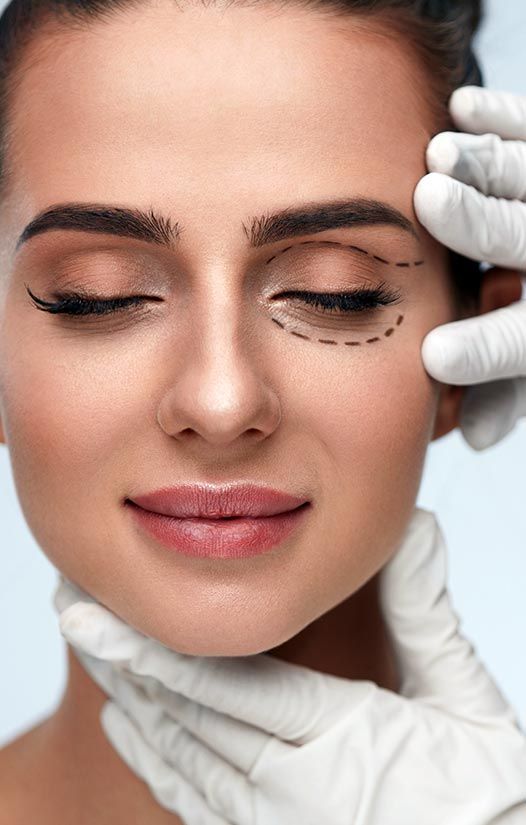
Blepharoplasty, commonly known as eyelid surgery, is a cosmetic surgical procedure performed to improve the appearance of the eyelids by removing excess skin, muscle, and fat deposits. Here’s an overview of the procedure:
Pre-operative Evaluation: Before undergoing blepharoplasty, you will have a consultation with a plastic surgeon to discuss your goals, medical history, and expectations. The surgeon will evaluate your eyelids, assess your overall health, and determine whether you are a suitable candidate for the procedure.
Anesthesia: Blepharoplasty can be performed under local anesthesia with sedation or general anesthesia, depending on the extent of the surgery and your preferences. Your surgeon will discuss the anesthesia options with you and recommend the most appropriate choice.
Surgical Technique: During upper eyelid blepharoplasty, incisions are made along the natural creases of the eyelids to minimize scarring. Excess skin and fat are removed, and the incisions are closed with fine sutures. Lower eyelid blepharoplasty may involve making incisions just below the lower lash line or inside the lower eyelid (transconjunctival approach) to access and remove excess fat and tissue. In some cases, additional procedures such as fat repositioning or skin tightening may be performed to achieve optimal results.
Recovery: After blepharoplasty, you may experience mild swelling, bruising, and discomfort around the eyes, which can be managed with pain medication and cold compresses. Your surgeon may recommend keeping your head elevated and avoiding strenuous activities for the first week following surgery. Most patients are able to resume normal activities within 7-10 days, although it may take several weeks for swelling and bruising to fully resolve.
Results: The final results of blepharoplasty will gradually become apparent as swelling subsides and the tissues heal. You may notice a more youthful and rejuvenated appearance around the eyes, with smoother eyelid contours and improved symmetry. While blepharoplasty can provide long-lasting results, the aging process will continue, and some degree of natural tissue laxity may eventually develop over time.
Risks and Complications: Like all surgical procedures, blepharoplasty carries certain risks, including infection, bleeding, scarring, asymmetry, and changes in eyelid position or function. Your surgeon will discuss these potential complications with you during the consultation and take steps to minimize the risk of adverse outcomes.
Overall, blepharoplasty can be a highly effective and rewarding procedure for improving the appearance of the eyelids and achieving a more youthful and refreshed look. However, it’s important to choose a qualified and experienced plastic surgeon and carefully follow their pre-operative and post-operative instructions to ensure the best possible outcomes.

